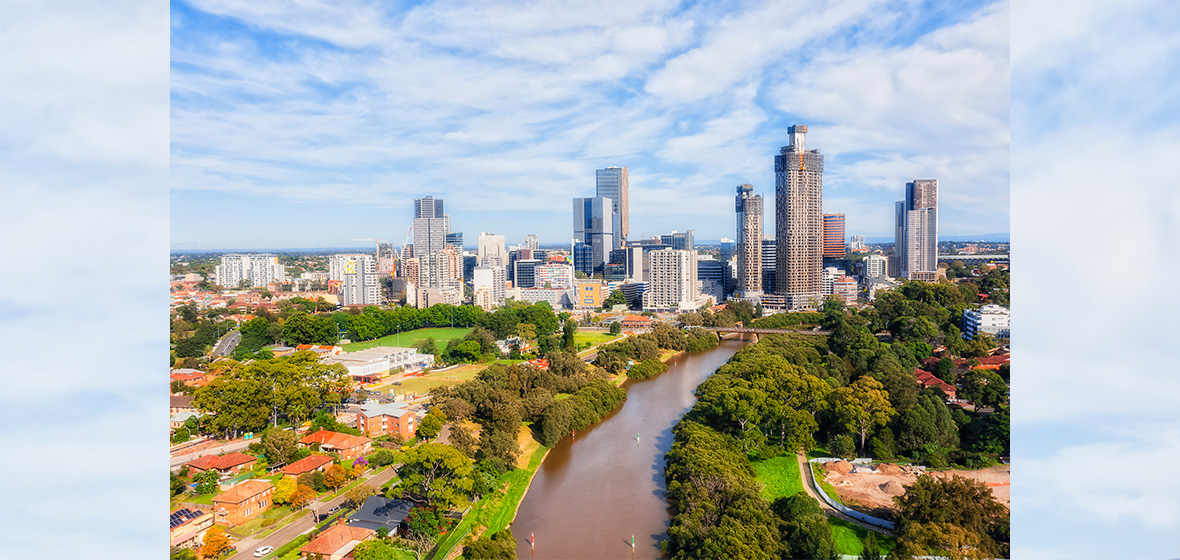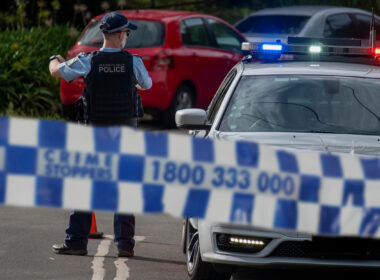As the demographic heart of Sydney, Parramatta is the focus of a renewed push by local businesses, council and law firms to expand the area’s legal precinct.
A revitalised effort for a bold expansion of court infrastructure and services in Parramatta aimed at improving access to justice as Sydney’s population shifts west is finding renewed support with the local council, law firms from the area, and major universities.
Momentum on the council-led proposal, which wants to see the setting up of a permanent Supreme Court presence in Parramatta, a new law school in the area and more legal jobs in the Parramatta CBD, was floated in 2021 but took a hit from the COVID-19 pandemic.
However, now, under new Parramatta Lord Mayor Pierre Esber, the council, along with a coalition of western Sydney based law firms and universities, is ramping advocacy back up in a bid to galvanise support for shifting more legal services west from central Sydney.
‘Untapped opportunity’ in Parramatta
As academics from the University of Western Sydney, a proponent of the plan, make clear, Parramatta’s current justice precinct is already a “comprehensive and well-planned” hub of legal services. It “includes every level of state court” except a coroner’s court, a prosecutor’s building, support services, and Commonwealth law courts, including the Family Court and Federal Circuit Court. The precinct, which cost around $330 million to build, also hosts a drug court.
Even so, according to Parramatta Council, there is a compelling case for the area – said to be Sydney’s second largest legal precinct – to be expanded with a permanent Supreme Court presence, a new law school, and a job-creating legal innovation start-up incubator.
If the Supreme Court had a permanent physical presence in Parramatta, like at King Street in the CBD and Taylor Square in Darlinghurst, an extra 30 per cent of Supreme Court hearings could take place in the fast-growing area of western Sydney, according to advocates.
That translates to capacity for 4,000 more Supreme Court matters to be heard in Parramatta each year, according to the council’s latest report on the proposal, released in October.
At present the Supreme Court sits in Parramatta, but not on a regular basis.
Central to the council’s push for the Parramatta to be transformed into “one of Australia’s key legal hubs” is demographics. It argues that, given most Sydneysiders now live in the city’s west, it makes sense for more legal services to be located closer to them.
Pierre Esber, a veteran Labor councillor who took office as Parramatta Lord Mayor in September, says in the recently released council documents that the “City of Parramatta has an untapped opportunity to expand our presence as a legal centre”.
“Our advocacy aims to ensure our legal and court services meet the needs of our growing community, enabling greater access to talent, infrastructure and justice,” Esber says.
Central to his argument is that “Sydney is absorbing the bulk of Greater Sydney’s population growth, so enticing the suite of justice services closer to the people has many benefits”.
In particular, he points to the move being “good for equity and accessibility reasons”.
Westward trend to continue
The council highlights that the westward demographic trend, already underway, is set to continue, strengthening the claim for extra legal services to be shifted from the CBD.
At present, more than two million people call western Sydney home, with that number set to exceed three million over the next 20 years. In that time, Parramatta’s population is expected to double to 500,000 people, the growth underlined by recently announced housing developments like the state-led rezoning of Parramatta’s Church Street North precinct as part of efforts to address long-term housing supply issues. There’s also the high-profile redevelopment of Rosehill racecourse to make way for tens of thousands of new homes.
Despite the bullish population outlook in the west, most legal services remain in the CBD.
There are twice as many courts in the CBD as in Parramatta, while there 16,000 legal service jobs in the city versus 1,000 in Parramatta, the council says. Eighty per cent of barristers operate from central Sydney, which continues to be the base for most highly paid legal workers, it adds.
“This gap in resourcing, including the number of judges, is a constant strain on growth and capacity to serve,” the council says.
“As Sydney’s population growth continues to move west, equitable access to justice services becomes critical to the region’s liveability and prosperity. Given the scale of growth, there is an opportunity to spatially disperse matters to better align with Sydney’s overall population distribution.”
As Sydney’s population growth continues to move west, equitable access to justice services becomes critical to the region’s liveability and prosperity.
A positive plan for western Sydney clients
Scott Dougall, a partner at Carroll & O’Dea Lawyers, backs the ambitious plan, saying it would improve the situation for many western Sydney residents who need legal assistance.
“Most of our clients have a preference to see us closer to where they live and that is western Sydney,” Dougall tells LSJ. “It certainly is more convenient for clients to see us closer to home, to fit in with their work and personal commitments. We do have most clients express a preference to see us at our Parramatta office.”
Aleisha Nair, senior associate at the firm and a member of the Parramatta Legal and Coalition, a group spearheading the expanded legal precinct proposal, says having legal services anchored in the CBD is particularly hard for some western Sydney clients, especially in the compensation and personal injury space.
Nair says she works with people with serious injuries who are “extremely vulnerable”, which can make trips into the CBD for court appearance very onerous.
“To actually attend in person in the CBD is a lot of effort sometimes it’s over an hour of travel, they have to be on heavy pain medication, it’s just impractical,” she says.
“To not allow them the opportunity to come to hearings in Parramatta is a real injustice.”
It can also be “quite draining” for clients, especially those with mental injuries, “sitting on public transport” to get into the CBD from outer western Sydney suburbs.
“Some clients just don’t have capacity to do it,” Nair adds.
Proponents of the plan also see it as a way to increase the number of legal practitioners working in the region, which could improve the work-life balance of western Sydney lawyers. It would mean more lawyers would be able to work closer to home on a regular basis.
Despite more lawyers calling the city’s west home, Parramatta only attracts 5 per cent of Greater Sydney’s legal jobs compared to 71 per cent in the CBD, according to the council.
“The legal profession has had a very eastern Sydney view of the world and that’s something we need to confront and make a strong case for why the western suburbs need and deserve a fairer hearing from the justice system,” David Borger, executive director of Business Western Sydney, tells LSJ.
‘we need to confront and make a strong case for why the western suburbs need and deserve a fairer hearing from the justice system’
‘Burgeoning metropolis’ needs strong legal sector
Borger, the head of the western Sydney business advocacy group, says Parramatta as a “burgeoning metropolis in the geographical heart of Greater Sydney” needs more legal services jobs. Boosting the number of lawyers will support “the diversification of the city’s economy and have a strong benefit through more jobs and economic activity”, he says.
The council says an extra 700 to 1,400 new legal jobs in Parramatta CBD – possible if the NSW Government invested to increase the service capacity of the Parramatta Justice Precinct – would flow through to up to $350 million in value added to the local economy.
“We are continuing to advocate to the Attorney-General and the Chief Justice for why we want to see greater investment in the legal infrastructure in Parramatta and more judges sitting and hearing cases in our city,” Borger says.
He has backed similar calls since 2013, arguing at that time that, with almost one-third of NSW’s population in the Sydney’s west, there is a strong case for a “fully functioning” justice system in the main centre of the region that can service the population’s legal needs.
Adding to the case for Parramatta, the council contends, is the NSW government’s “six cities vision” – aimed at creating good jobs closer to where people live – and identifying both Parramatta and the CBD as primary location for services and knowledge jobs in Greater Sydney.
It also says locating more legal services to the area makes sense given the government’s office relocation to Parramatta of Sydney Water, the Greater Sydney Commission, Departments of Education and Planning, Industry and Environment, NSW Industrial Relations Commission, NSW Police Headquarters and most of the Department of Justice.
Barriers to change remain
Despite urgings for a boost to legal services and infrastructure in Parramatta for over a decade, advocates have so far made little progress. Indeed, elements of the current plan were first brought to council by former Lord Mayor Andrew Wilson in 2018, prompting the commission of a report by SGS Economics and Planning analysing demand for legal services in Parramatta, as well as the economic and service benefits of the precinct to the area.
That report, as per the council, found various factors contributed to a “cycle” that keeps the bulk of law and legal talent in Sydney’s CBD, including resourcing of Parramatta courts and “the perception that the Sydney CBD is more prestigious”.
In the view of Carroll & O’Dea Lawyers’ Nair, a contributor to the plan, failing to gain traction among key decision-makers is that “I guess from the government’s perspective and from the Chief Justice’s perspective they need to justify the cost of having at least one equity and one common law judge sitting in Parramatta.”
However, as she notes in relation to the Supreme Court having a permanent home in the area, “it might not need to look like a permanent sitting”.
“It might not be that a judge has to come every single day but that there is an option for hearings to be allocated in Parramatta and that there is a rotation or casual sitting.”
Asked about whether the state government backed the council plan, a spokesperson for the NSW Attorney General Michael Daley said the Supreme Court already had a presence at Parramatta, with two courts assigned to it in the Parramatta Justice Precinct that are regularly used by Supreme Court judges, including for terrorist trials.
“The Court of Criminal Appeal often sits in Parramatta, including twice in the past month,” the spokesperson said.
A spokesperson for the NSW Liberal opposition also declined to offer support, saying the previous NSW coalition government “made a significant investment in building up justice infrastructure and increasing access to justice across NSW, including in Parramatta”.
“Listing Supreme Court cases in Parramatta is a matter for the Chief Justice,” the spokesperson said.
Even so, Parramatta Council remains committed to the plan. In a statement a spokesperson for the council said it supported the “expansion of the Justice Precinct and legal services industry in Parramatta as the fast-growing geographical heart of Greater Sydney and a global city in its own right.”
“An expansion of the precinct would bring more than 2,200 legal jobs to the area, boost the local economy by $350 million per year and ensure accessibility of legal services to the growing communities of Western Sydney,” the spokesperson told LSJ.
The council said the Parramatta Legal and Justice Coalition “continues to advocate for the plan with both the State and Federal Governments”.
On the way forward, Nair, a member of the coalition, urges a big push from the local legal fraternity to make the plan a reality.
“I think that lawyers need to get up and say ‘hey we live out west, our clients live out west, we deserve to be able to provide justice to the centre of Sydney which is Parramatta.”




